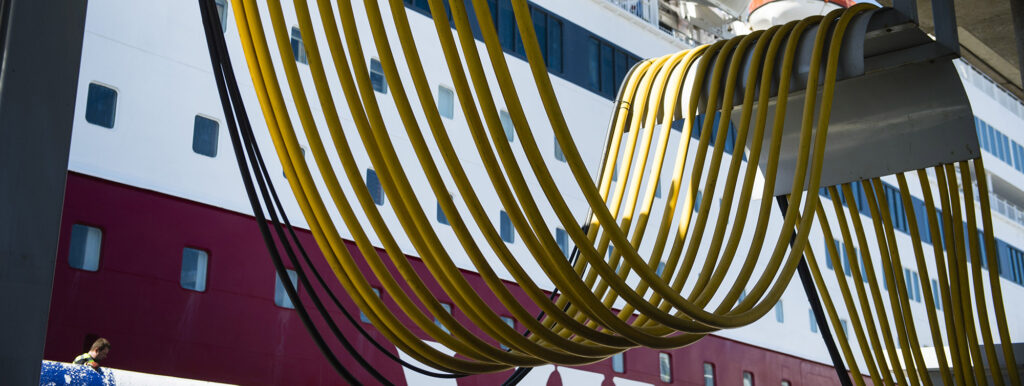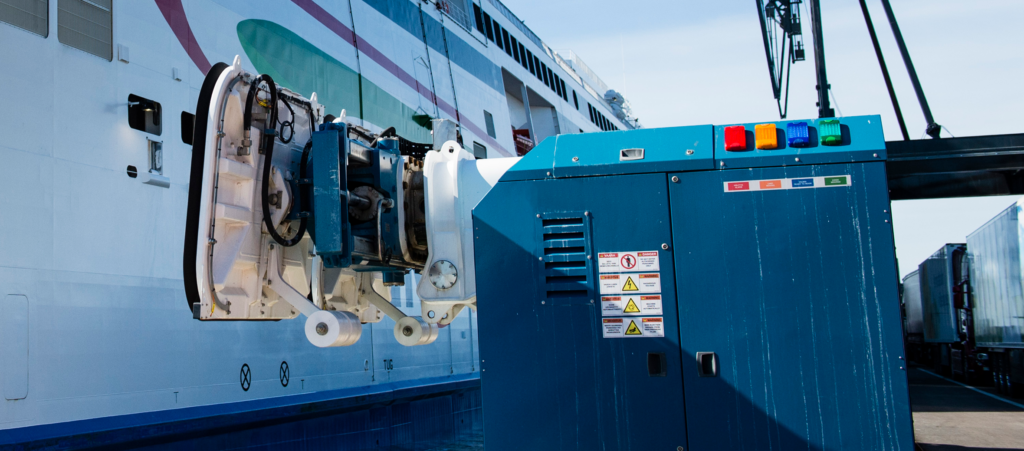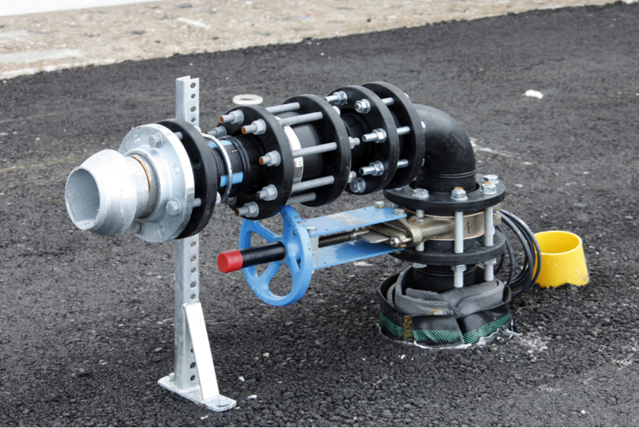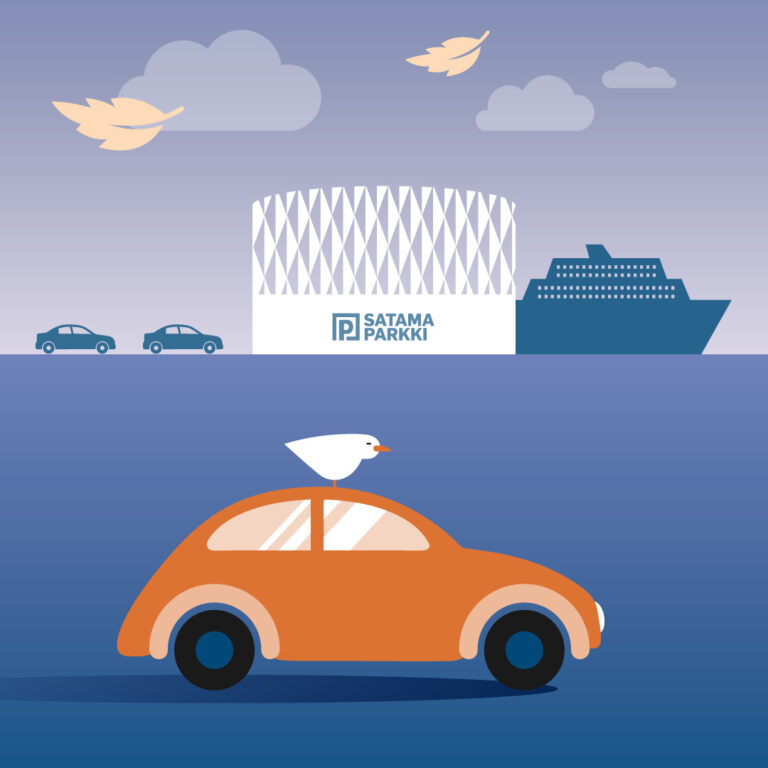
Management of environmental impacts
Minimising the harmful environmental impacts of port and maritime operations is one of the most important duties of the Port of Helsinki. Challenges are posed by the extremely busy ship traffic in the Baltic Sea and the locations of the harbours close to the centre of the Finnish capital city.
Noise, air emissions, ship-generated waste and the impacts of the operations on waterways are the main environmental impacts of seafaring. Our ways of managing the impacts in the Port of Helsinki include
- monitoring the noise and inspections of the waterways,
- automooring, or the automatic vessel mooring system,
- Onshore Power Supply (OPS),
- management of the waste water from vessels, other services for the management of ship-generated waste,
- various price incentives.
Noise
Noise prevention is particularly important to the Port of Helsinki, as our passenger harbours are located in the middle of a densely populated capital city. Because we want to be good neighbours to city residents, we minimise noise disturbances. To achieve this, we work in close cooperation with the city planning bodies of the City of Helsinki. In the construction of Vuosaari Harbour, for example, special consideration was given to noise. A hill to block noise and a concrete noise barrier measuring almost a kilometre were built along the north-east edge of the harbour.

Many vessels use their own sound attenuators. Additionally, the Port of Helsinki offers onshore power for vessels at many of its quays. When a moored vessel is connected to onshore power, the need to use auxiliary engines is reduced. This has led to lower decibel levels. Furthermore, comprehensive technical guidance is used to address noise disturbances, focusing on matters such as reducing the rattling of ramps.
Noise in the harbours is caused by things like ships’ main engines when leaving and arriving in the harbours. Noise is also caused by the loading and unloading of cargo, ships’ ventilation systems, and use of auxiliary engines when the vessel is generating electricity for its own use while moored. Industrial machines and vehicles also cause noise as they move around the harbours.
Noise caused by port operations must not exceed 55 dB during the day or 50 dB at night, when measured from the yards or outdoor areas of residential buildings. The noise level in the port is monitored with noise assessments, along with noise modelling and measurements, commissioned by the Port of Helsinki every few years. Additionally, we work in close cooperation with city planning bodies in matters such as land use planning.
Air emissions

An automated systems speeds up the mooring and release of vessels. It shortens turnaround times in the harbour and gives vessels a chance to slow down a bit at sea, which reduces fuel consumption and air emissions.
Onshore power supply systems built at the port and on vessels make it possible to reduce the climate emissions generated while ships are berthed by as much as 50–80 per cent, as the ships receive the electricity they need while at berth from land, and there is no need to keep auxiliary engines running. The use of onshore power supply improves air quality and reduces noise in the city centre close to the port. In Helsinki, onshore power supply is available in Katajanokka and, starting from 2021, also on the Olympia Terminal side.
One of the Helsinki Region Environmental Services Authority’s (HSY) movable air quality monitoring stations is located somewhere within the Port of Helsinki area every other year. The measurements are primarily used to monitor the emissions of ships, vehicles and industrial machines; energy generation; and transboundary pollution. Compared to other sources, the air emissions of the Port of Helsinki are relatively small.
Further information about the monitoring stations and the monitoring of air quality in Helsinki can be found on the HSY website.
Sulphur and particulate emissions from ship traffic have fallen noticeably thanks to the Sulphur Directive.
Nitrogen oxides, sulphur oxides and greenhouse gases are the key air emissions from port operations and vessel traffic. The sulphur emissions from ship traffic have clearly been reduced since the Sulphur Directive became valid in the Baltic Sea area. Following a tightening of regulations, since the start of 2015 vessels’ sulphur emissions have been limited to 0.1% throughout the Baltic Sea.
In practice, this means that the vessel needs to use exhaust gas scrubbers, low-carbon or alternative fuels, such as liquefied natural gas (LNG) or biofuels.
For its part, the Port of Helsinki facilitates the adoption of LNG and, among other things, has drawn up an LNG safety guide that describes the minimum requirements for shipping companies and LNG suppliers that want to refuel with LNG in the Port of Helsinki.
Waste management of vessels
All Port of Helsinki harbours have their own waste management plans.
Ship-generated waste is divided into solid waste, oily waste and waste water. Additionally, many vessels sort their solid waste into different waste types. The Baltic Sea ports use the No Special Fee payment system, in which the waste fee is charged regardless of whether the vessel leaves waste at the harbour or not.
- Vessels operating in regular liner traffic in Helsinki, such as the RoPax ferries on the Stockholm and Tallinn routes, have signed a waste management agreement directly with the waste management company.
- The Port of Helsinki provides waste management services mainly to international cruise ships and some cargo vessels.

Each of the Port of Helsinki’s quays is equipped to allow for direct discharge of waste water into the city’s sewer network, from where it is transported directly to HSY for processing. A separate charge is not levied for discharging waste waters.
To reduce the odours released through the processing of waste waters, passenger vessels preprocess their waste waters before discharging them at the harbour. Additionally, a waste water preprocessing facility has been constructed at Vuosaari Harbour for this purpose.
A ban on discharging sewage into the Baltic Sea special area is in force starting from 1 June 2021. The ships arriving from outside the Baltic and sailing straight to Saint Petersburg will fall within the scope of the ban after a transition period that will run until 1 June 2023.
Environmental price incentives
The Port of Helsinki encourages vessels to discharge their waste water at shore. The Baltic Sea ports, Helsinki included, use the No Special Fee payment system, in which no separate fee is charged for leaving the waste water in the harbour. The Port of Helsinki’s vessel waste management fees are based on the size of the vessel, rather than on whether the vessel is discharging waste at the port or not.
In 2016, we also introduced a new kind of price incentive mainly for international cruise ships. Vessels are granted a 20% discount on the waste management fee charged for solid and oily waste, if they discharge their waste water at the Port. Currently, more than 91% of international cruise ships’ wastewater is received at the Port of Helsinki’s quays.
Environmental discounts encourage shipping companies to reduce their environmental impacts.
In 2018, the Port of Helsinki introduced an environmental discount on vessel charges granted to liner traffic vessels. The discount is available to those who implement measures that reduce vessels’ environmental impacts: lowered air emissions, noise reduction, or other investments that improve environmental efficiency. With the discount, the Port wants to encourage shipping companies to go beyond the minimum requirements in legislation in terms of reducing their environmental impact.
Impacts on waterways
The Port’s impacts on the surrounding marine area and its fisheries, for instance, have been monitored for a number of years.
Regular inspections of the waterways, in accordance with the currently valid environmental permits, are carried out at two inspection sites in front of Vuosaari. According to the results, the water in the port area is in good hygienic condition.
The impact on waterways from construction related to the Port of Helsinki’s different development projects is also limited and monitored. Construction involving waterways requires water permits, which are defined by measurements, sampling and flow and turbidity modelling, environmental charges, the necessary reports, and any inspections of the waterways, including inspections after construction has concluded.


